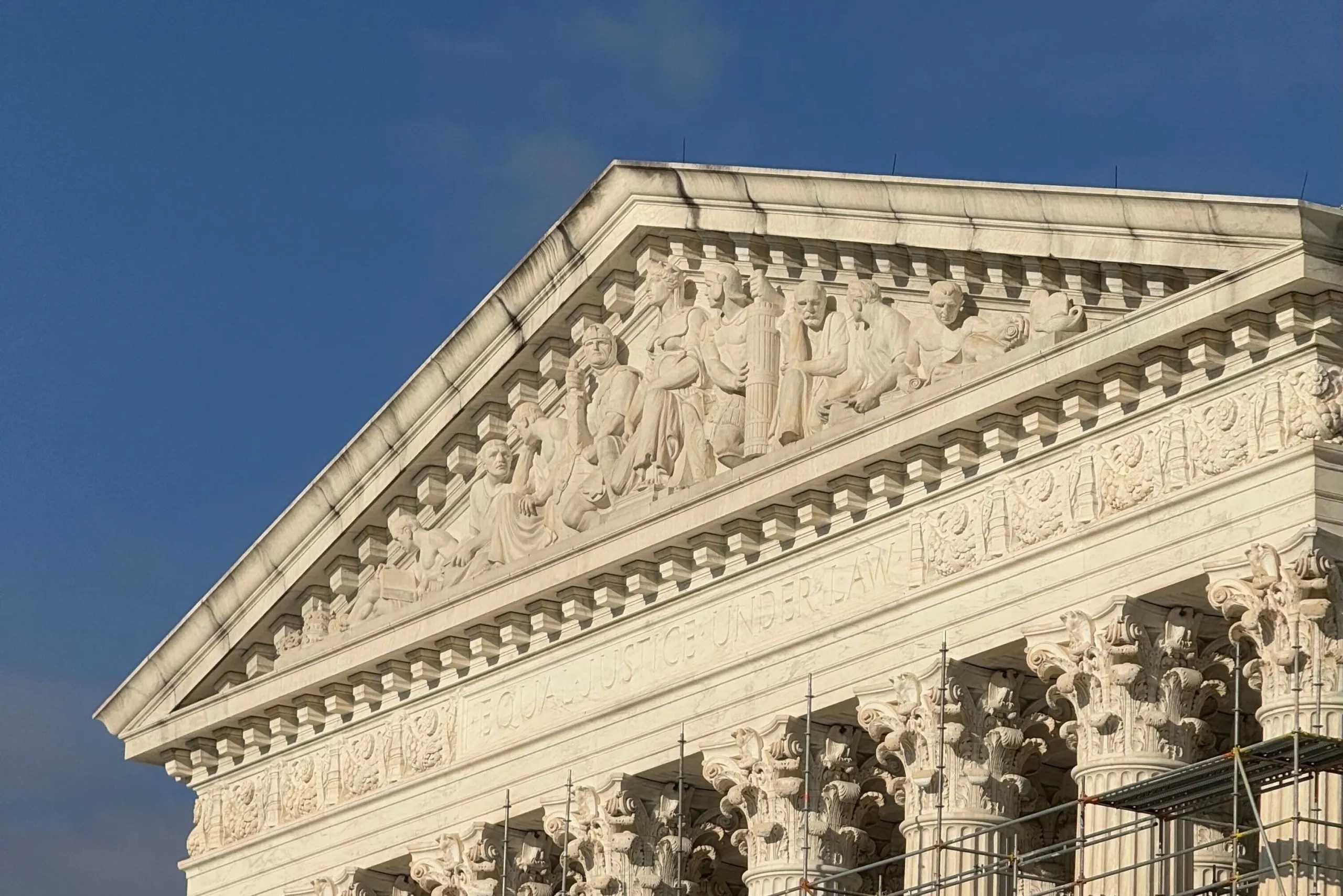SCOTUStoday for Thursday, October 2



Justice Thurgood Marshall was sworn in on this day in 1967, becoming the first Black Supreme Court justice. The two Black justices since Marshall, Justices Clarence Thomas and Ketanji Brown Jackson, currently sit on the court.
Morning Reads
- New High Say Supreme Court Is Too Conservative (Jeffrey M. Jones, Gallup) — A record-high share of Americans (43%) thinks the current Supreme Court is too conservative, and its approval rating remains low, according to a new Gallup survey. “Partisans’ views of the court’s ideology continue to differ: 75% of Democrats and nearly half of independents (46%) believe the court is too conservative, compared with 4% of Republicans. In contrast, most Republicans, 66%, describe the court as being ‘about right,’ while 28% think it is too liberal.” Just under half of Americans (49%) say they have either “a great deal” or “a fair amount” of trust in the judicial branch. “That level of trust is among the lowest in Gallup’s trend, essentially matching the low point of 47% from 2022.”
- Justice Kavanaugh becomes Supreme Court’s interpreter on emergency docket (Alex Swoyer and Stephen Dinan, The Washington Times) — A summer full of brief, unsigned responses to emergency applications on the interim docket has fueled much debate about the Trump administration’s winning streak and the court’s refusal to explain its decisions. Amid the debate, Justice Brett Kavanaugh “has emerged as a kind of court interpreter” by explaining his view on the court’s decisions in concurring opinions, according to The Washington Times. “Justice Kavanaugh’s separate writings often function as that bridge — explaining why a stay issues and how to read it — which, in a term heavy on emergency work, has been stabilizing,” said Adam Feldman, a SCOTUSblog contributor, to The Washington Times.
- Frozen feud: How Trump and the Supreme Court helped put historic Whole Foods union bid on ice (John Kruzel and Daniel Wiessner, Reuters) — President Donald Trump’s decision to fire Gwynne Wilcox, a Democratic member of the National Labor Relations Board, and the Supreme Court’s interim docket decisions allowing the firing to remain in effect have had significant consequences for unionizing efforts across the country, according to Reuters. Since Wilcox’s removal made it so that the NLRB has “fewer than the minimum of three members needed to carry out its core functions such as resolving disputed union elections,” at least 50 appeals of union elections are currently in limbo. “When the NLRB will regain members depends on how quickly the Republican-led U.S. Senate moves to confirm two nominees picked by Trump in July, Boeing’s chief labor counsel and an NLRB career staffer. A Senate committee [held] hearings on Trump’s nominees on Wednesday.”
- Federal Judiciary Can Pay Staff Two Weeks Longer in Shutdown (Suzanne Monyak, Bloomberg Law) — Judge Robert Conrad, director of the federal judiciary’s administrative office, told judges and court staff on Wednesday that the judiciary will be able to continue “paid operations” through Oct. 17 if the government shutdown isn’t resolved before then, which is “two weeks longer than initially projected,” according to Bloomberg Law. “Judiciary employees will continue to be fully paid while working for the next two weeks, and staff will receive their Oct. 10 and 24 paychecks as planned.”
- Will the Supreme Court uphold Trump’s power grabs? (Erwin Chemerinsky, Los Angeles Times) — In a column for the Los Angeles Times, SCOTUSblog contributor Erwin Chemerinsky contended that the “crucial question” for the 2025-26 Supreme Court term is whether the court “serves as a check on President Trump or just a rubber stamp approving his actions.” The justices’ decisions on executive power and other significant issues like congressional redistricting could be “momentous in deciding the future of American democracy,” Chemerinsky wrote.
SCOTUS Quick Hits
- The Supreme Court announced on Wednesday that it will hear arguments in January on Trump’s request to be able to remove Lisa Cook from her position as a Federal Reserve governor. Cook will remain in office for now.
- The first day of the 2025-26 term is next Monday, Oct. 6. Yesterday, we began publishing our previews of cases to be argued on Oct. 6, 7, and 8, and more are coming today.
- A list of the cases that the justices granted during their “long conference” on Monday is expected to be released sometime in the next few days.
A Closer Look: Stare Decisis
As many of our readers are likely aware, stare decisis, a Latin phrase meaning “stand by the thing decided,” refers to the court’s practice of following precedent. So as to preserve judicial, political, and social stability, the justices refrain from reinventing the wheel in each new case. Rather, the court typically “sticks with the first answer” it gave on a particular question and then applies that answer to the context of the new case, Justice Amy Coney Barrett explained in her book, “Listening to the Law.”
Still, the court does sometimes reverse course, like the Roberts court did in 2022 when it overturned Roe v. Wade after 49 years, returning the power to ban abortion to the states. In “Listening to the Law,” Barrett noted that the Roberts court has overturned precedent “roughly once per term.” That’s less often than the Burger court (3 times per term) or Warren court (2.5 times), Barrett wrote.
Justice Clarence Thomas, during a recent event at Catholic University’s Columbus School of Law, similarly acknowledged that change happens even when the court is generally following precedent. “It’s not some sort of talismanic deal where you can just say ‘stare decisis’ and not think, turn off the brain,” he said.
But (at least most of) the justices do not make changes to precedent lightly. “In determining whether to overrule precedent, they consider a series of factors, including the nature and degree of the error, whether the precedent has proven to be unworkable, whether it has been undercut by subsequent legal or factual developments, and whether overruling it would unduly upset the interests of those relying on the previous decision,” Barrett wrote.
These factors will likely come into play this upcoming term in such cases as Trump v. Slaughter, in which the court will decide whether to overturn the 1935 case of Humphrey’s Executor v. United States, which limited executive power by affirming that Congress can create independent, multi-member agencies whose commissioners can only be removed by the president “for cause.”
On Site
From Amy Howe
Fed Governor Lisa Cook to Remain in Office For Now
As noted above, the Supreme Court on Wednesday announced that it will hear oral arguments in January on a request from the Trump administration to allow the president to fire Lisa Cook, a member of the Federal Reserve’s Board of Governors. In a brief, unsigned order, the justices delayed their decision on the administration’s plea to pause a ruling by a federal judge in Washington, D.C., that keeps Cook in office despite President Donald Trump’s efforts to remove her from the board. Read Amy’s analysis of the order for more context on the announcement.
Case Previews
Evan Lee on Villarreal v. Texas
On Monday, the court will consider whether a trial court may prevent a criminal defense lawyer from talking to his client about the client’s ongoing testimony during an overnight recess. Evan Lee, a professor of law emeritus at UC Law in San Francisco, previewed the case for SCOTUSblog.
Also on Monday, the court will consider the extent to which state statutes designed to stem medical malpractice litigation apply in federal court. In his case preview for SCOTUSblog, Ronald Mann, a professor of law at Columbia, wrote that Berk v. Choy “surely will be the Supreme Court case of the year for medical professionals.”
Posted in Featured, Newsletters